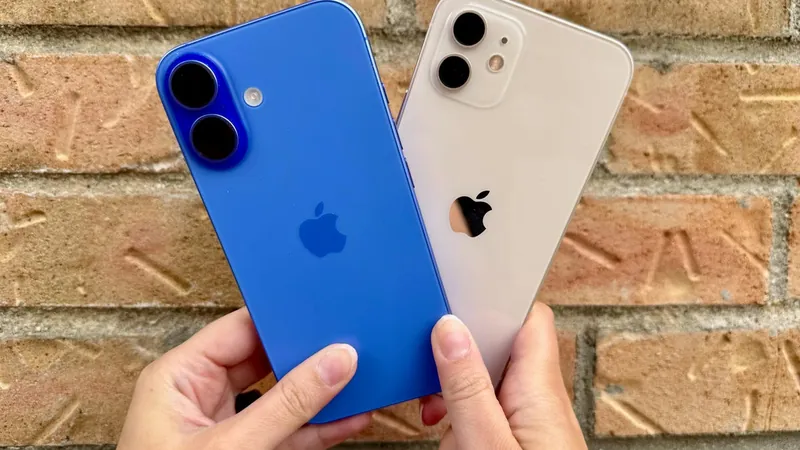
The Battle of Pain Relief: Erector Spinae Plane Block vs. Serratus Anterior Plane Block for Bariatric Surgery
2024-09-28
Author: Ming
Introduction
Obesity has reached alarming levels globally, with the World Health Organization reporting that over one billion people now struggle with this condition. Defined as having a Body Mass Index (BMI) over 30, obesity has more than doubled since 1990, and it is intrinsically linked to severe health issues, including type 2 diabetes, cardiovascular diseases, and more. Given this public health crisis, effective treatment options are necessary.
Bariatric Surgery: A Solution?
While lifestyle changes and medications have been traditionally employed to combat obesity, their long-term effectiveness is often limited, especially in severe cases. Bariatric surgery, particularly laparoscopic sleeve gastrectomy (LSG), has emerged as a viable solution for patients with significant obesity (BMI over 40 or over 35 with health complications). This surgical approach has been associated with remarkable weight loss and potential resolution of obesity-related comorbidities—up to 80% of patients may see their diabetes resolved post-surgery.
Postoperative Pain Management Challenges
However, one of the major hurdles following LSG is managing postoperative pain. Current pain management guidelines offer limited options, and reliance on opioid medications is concerning due to their associated risks like respiratory depression and sedation. Given the specifics of the bariatric population's health, there is a pressing need for effective alternative pain management strategies.
Exploring Regional Analgesia Techniques
Researchers are now looking into regional analgesia techniques as a possible solution. Two notable methods are the Erector Spinae Plane Block (ESB) and the Serratus Anterior Plane Block (SAPB) combined with Subcostal Transversus Abdominis Plane Block (TAP). Both have received attention for their potential to reduce the need for opioids and manage pain effectively in the context of bariatric surgery.
The Clinical Trial
A new clinical trial is being conducted to compare the effectiveness of these two regional analgesic techniques. The study will follow 70 patients undergoing elective LSG surgery, with half receiving the ESB and the other half undergoing SAPB and subcostal TAP block.
Measuring Outcomes
The primary goal is to measure the quality of recovery 24 hours post-surgery using the QoR-15 score—essentially, how well patients feel in terms of pain management, nausea, and overall comfort. Secondary outcomes include the time to the first analgesic request post-surgery and total opioid consumption, among other complications.
Initial Findings
Initial research into ESB has shown promise, suggesting it may provide significant pain relief by targeting multiple nerve pathways. Comparatively, the SAPB and TAP combination is known for effective pain management in upper abdominal procedures but may not be as widely studied in the context of LSG.
Conclusion: The Future of Pain Management in Bariatric Surgery
As nations grapple with rising obesity rates, it’s imperative to refine post-operative care strategies for bariatric patients. This study aims not just to provide clarity on effective pain management but to pave the way for safer surgical practices. Stay tuned to see which technique prevails, as the findings may reshape the approach to postoperative care for hundreds of thousands undergoing laparoscopic sleeve gastrectomy worldwide!


 Brasil (PT)
Brasil (PT)
 Canada (EN)
Canada (EN)
 Chile (ES)
Chile (ES)
 España (ES)
España (ES)
 France (FR)
France (FR)
 Hong Kong (EN)
Hong Kong (EN)
 Italia (IT)
Italia (IT)
 日本 (JA)
日本 (JA)
 Magyarország (HU)
Magyarország (HU)
 Norge (NO)
Norge (NO)
 Polska (PL)
Polska (PL)
 Schweiz (DE)
Schweiz (DE)
 Singapore (EN)
Singapore (EN)
 Sverige (SV)
Sverige (SV)
 Suomi (FI)
Suomi (FI)
 Türkiye (TR)
Türkiye (TR)